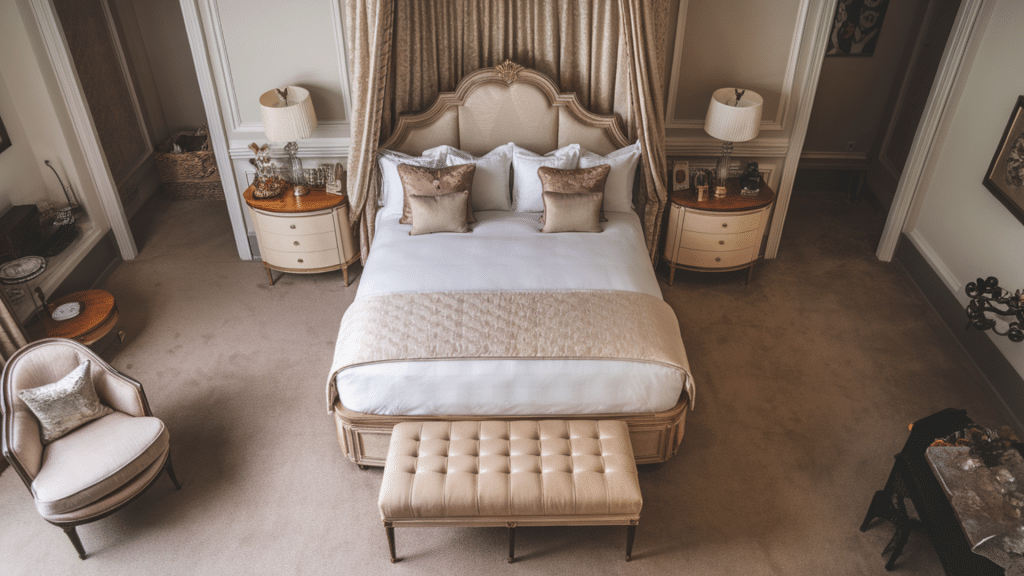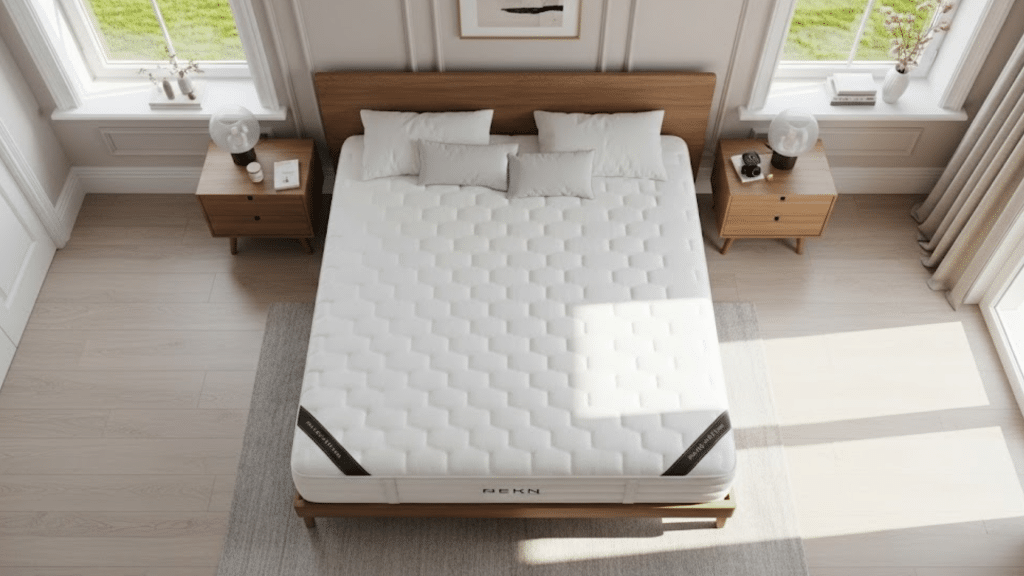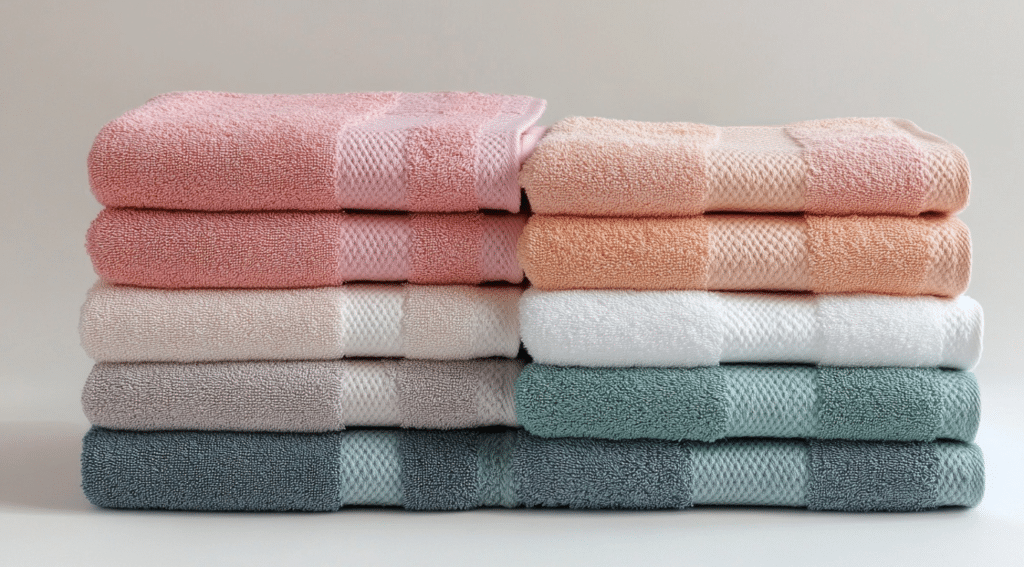A bed that fits just right can make a significant difference in your daily rest and the overall ambiance of your bedroom. When it comes to space and comfort, many people begin by considering the dimensions of a king-size bed.
It’s a top choice for couples who want room to stretch or for families who share sleep space with little ones.
In this blog, I’ll share details on the size, how it compares to other beds, and provide tips to help you decide if it fits your room and lifestyle. By the end, you’ll know exactly what to expect from a king bed and if it’s the right fit for you. Let’s begin.
What Are the Dimensions of a King-Size Bed?
A standard king-size bed is 76 inches wide and 80 inches long. That’s 6 feet 4 inches wide by 6 feet 8 inches long.
If you’re used to queen-size beds, this will feel much wider. A queen is only 60 inches wide, so a king gives you 16 more inches of space.
Here’s how it looks in different measurements:
- Inches: 76″ x 80″
- Feet: 6.33 ft x 6.67 ft
- Centimeters: 193 cm x 203 cm
Some people also refer to this as the Eastern King. But they mean the same thing.
Please note that these numbers refer only to the mattress itself. The bed frame might add a few more inches to each side.
Variants of King-Size Beds

There isn’t just one type of king bed. Depending on your height, room size, or sleep needs, one might fit better than another. Here are the main types and what makes each one different.
Standard King
The standard king is 76 inches wide and 80 inches long. It gives couples lots of space and is great for those who share the bed with kids or pets. It works best in large bedrooms and is the most widely available king-size mattress in stores.
California King
The California king is slightly narrower, at 72 inches wide, but longer, at 84 inches. It’s a good choice for tall people who need extra legroom. This size works well in long bedrooms but might feel tight in rooms that aren’t wide enough to fit the length.
Split King
A split king is made of two twin XL mattresses placed side by side, each 38 inches wide by 80 inches long. This setup is ideal for couples who prefer different mattress firmness or adjustable bases. It’s also easier to move through doorways or tight spaces.
Alaskan King
The Alaskan king is massive, measuring 108 inches in diameter. It’s great for huge rooms or families who share a bed. However, it’s harder to find, more expensive, and usually needs custom-made bedding and frames. Most people don’t need a bed this big.
King Size vs. Other Mattress Sizes
| Mattress Size | Width (in) | Length (in) | Good For |
|---|---|---|---|
| Twin | 38 | 75 | Kids, solo sleepers |
| Full | 54 | 75 | Teens, solo adults |
| Queen | 60 | 80 | Couples, most bedrooms |
| King | 76 | 80 | Couples, families, big rooms |
| Cal King | 72 | 84 | Tall sleepers, couples |
The King is the widest mattress available in most stores. You get lots of space to roll around, or sleep with kids or pets.
Will a King Bed Fit in Your Room?
You’ll need a room large enough for a king-size bed. A good rule is to have at least 2 feet of space on all sides of the bed.
Also, think about:
- Will it fit through your door?
- Can it navigate your stairs or navigate around tight corners?
- Where will you put nightstands, dressers, or other furniture?
If your room is smaller than 12×12, a king bed might take up too much space and make it hard to move around. Even if it technically fits, your room may feel crowded or unbalanced.
Also, be sure to measure doorways, halls, and staircases so you don’t get stuck during delivery. Use painter’s tape on the floor to mark out the bed’s size. This lets you see how much walking space will be left once the bed is in place.
Room Layout Planning with a King Bed

Planning your room around a king bed takes a little more thought. Because of the bed’s size, you need to be smart with how you place other furniture.
Start with the bed centered on the longest wall. Leave at least 2 feet of space on each side to allow for easy walking around. Keep nightstands close to the bed, but not blocking pathways. If your room is spacious, consider placing a bench at the foot of the bed for storage and additional seating space.
Avoid placing too many large pieces near the bed. Instead, opt for smaller dressers or wall-mounted shelves to conserve space.
If you have windows or a heater, make sure the headboard or bed frame won’t block them. Also, leave enough open floor space to make the room feel balanced and comfortable. A smart layout can make even a tight room feel roomy with a king bed.
Is a King Bed Right for You?
A king bed can be a great choice if:
- You sleep with a partner and want space
- You sleep with kids or pets
- You move a lot in your sleep
- You have a big bedroom and don’t want it to feel empty
But it may not be the best choice if:
- Your room is smaller than 12×12
- You’re trying to save money (king beds, bedding, and frames cost more)
- You move often and don’t want the hassle of moving a big bed
Think about your lifestyle. If you value personal space while sleeping, a king bed can be beneficial. If you often wake up from bumping into someone, the extra width is worth it.
However, if you don’t have the space, it can make your room feel tight. Additionally, larger beds are more expensive to furnish and clean, so ensure the comfort is worth the extra upkeep and expense.
Tips Before Buying a King-Size Mattress
Before selecting a king-size bed, take a few smart steps to ensure it fits your space and meets your needs. A little planning now can save you money, stress, and time later.
- Measure Your Room: Don’t rely on guesses. Use a tape measure to measure the length and width of your room before selecting a king bed.
- Think About Sleep Habits: Consider how you sleep and who you sleep with. Partners, pets, or kids all affect how much space you’ll need.
- Test In-Store if Possible: If possible, lie down on different king-size mattresses at a store. This helps you feel the difference in firmness and support.
- Ask About Delivery: Some stores charge extra to carry the bed upstairs or around tight corners. Ask in advance to avoid surprises.
- Select the Right Type: King-size mattresses are available in various types, including memory foam, spring, hybrid, and latex. Select one option based on your comfort level, support needs, and budget.
Cleaning and Maintenance for King-Size Beds
Cleaning a king-size bed takes more effort due to its size. But it’s easy to manage with a few simple habits.
- Rotate the Mattress: Turning the mattress every 3 to 6 months helps spread out wear and keeps it comfortable longer.
- Vacuum Underneath: Dust and dirt build up under large beds. Vacuum underneath at least once a month to keep the space clean.
- Use a Mattress Protector: A good protector blocks spills, sweat, and dust, making the mattress last longer and easier to clean.
- Spot Clean Spills Right Away: If a spill occurs, use a damp cloth with mild soap. Don’t soak the mattress, just blot the area gently.
- Clean Bedding Often: Wash sheets and pillowcases weekly. Clean blankets, covers, and mattress pads once or twice a month to stay fresh.
- Leave Room to Move: Make sure there’s space around the bed so you can easily reach and clean all sides.
Conclusion
Now you know the important facts about the dimensions of a king-size bed and how it compares to other options. This info can help you feel more confident when choosing the right bed for your space and comfort.
Before you buy, take the time to measure your room and consider how you sleep. A king bed can be a great choice, but only if it fits your needs and home. Keep in mind, comfort is about more than size; it’s about how well everything works together.
If you’re still unsure or want to learn more about other mattress sizes, consider visiting my other blogs. They’ll help you make a wise choice you’ll feel good about.











